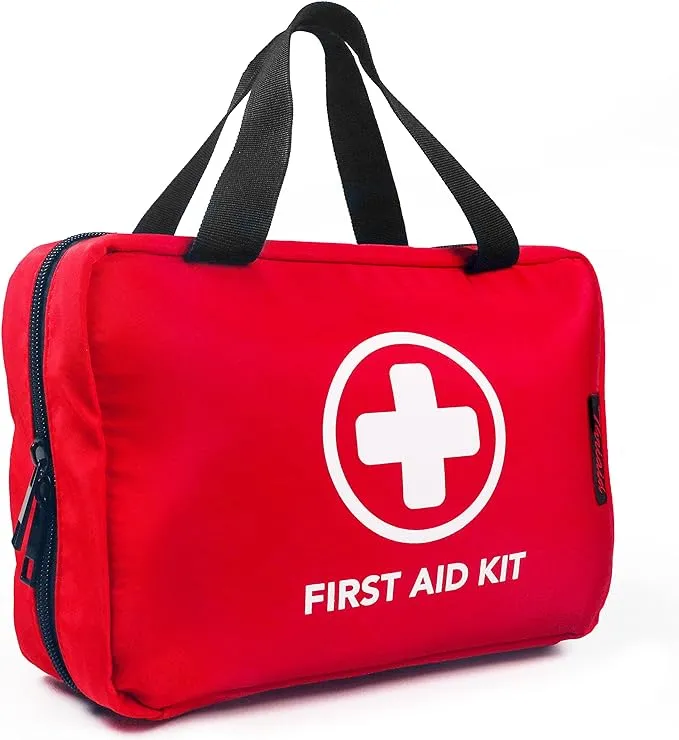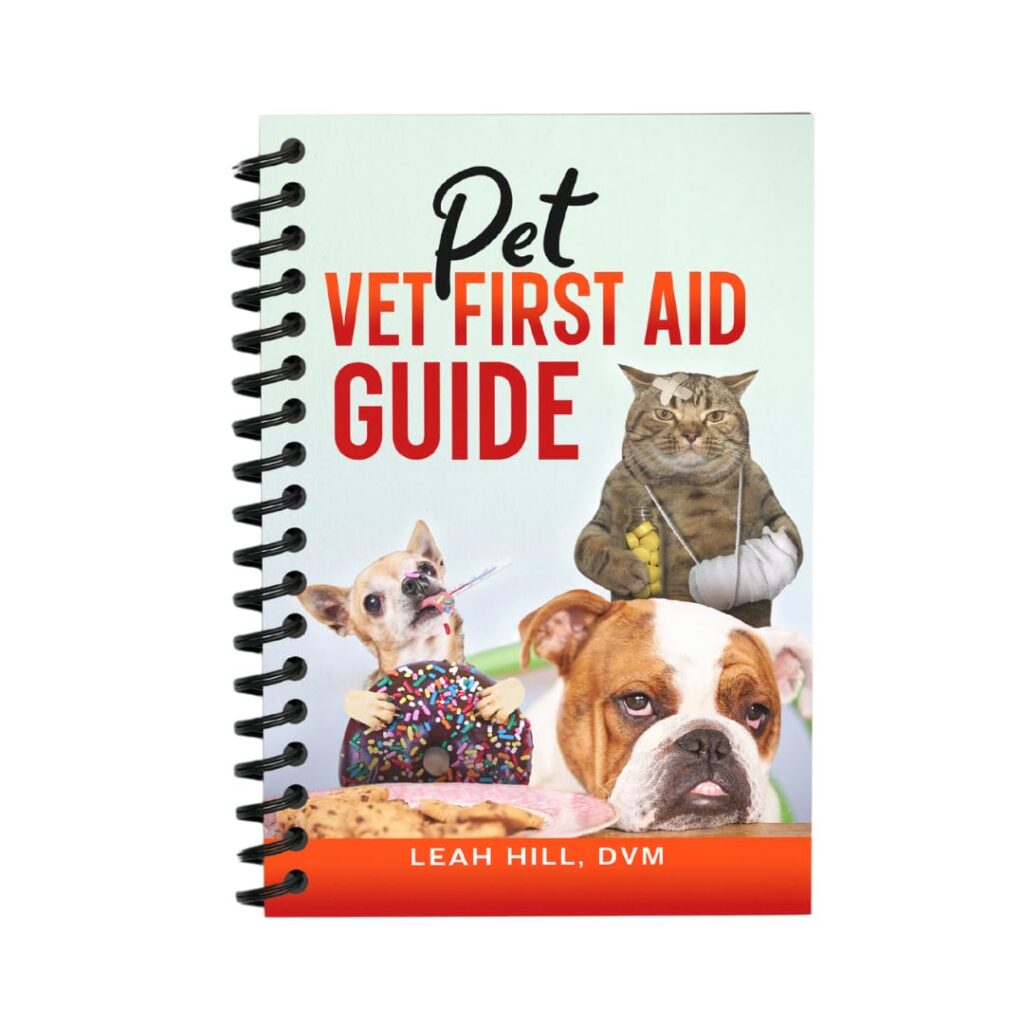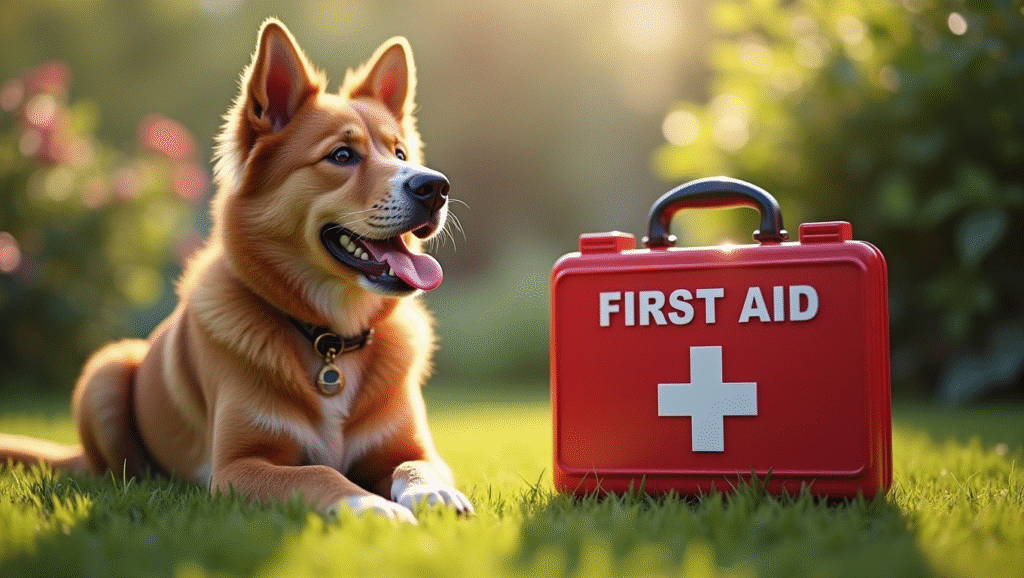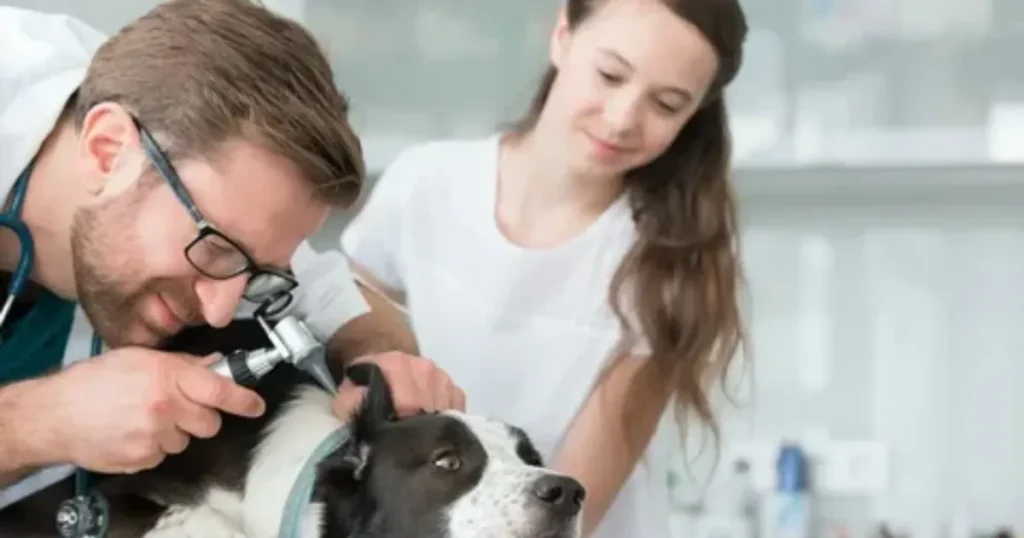Maximize Your Dogs Safety Powerful First Aid Methods is all about keeping your furry friend safe during emergencies.
Every dog owner should know essential first aid techniques to help in a pinch. We’ll cover common canine emergencies, basic care steps, and tips to prevent accidents before they occur.
Get ready to empower yourself with the knowledge that could save your dog’s life!
Main Points to Remember
- Keep a first aid kit for your dog ready.
- Learn basic dog CPR techniques.
- Know common dog emergencies and their signs.
- Keep your vet’s number handy for quick access.
- Stay calm to help your dog feel safe.

Summary
Understanding Dog First Aid: Why It Matters for Your Furry Friend
When it comes to our furry companions, their safety and well-being are always top of mind. But what happens when an unexpected situation arises? Understanding dog first aid is crucial for every pet owner. Just like you would want to know how to help a child or a friend in distress, knowing how to respond to your dog’s needs can make a huge difference in an emergency.
Imagine your dog gets into something they shouldn’t have, or they take a tumble while playing. In those moments, being prepared can mean the difference between a minor scare and a serious situation. First aid isn’t just about knowing how to treat injuries; it’s about being proactive and ready to act when it counts.
Having some basic knowledge can help you stay calm and collected when your furry friend needs you the most. Plus, it’s a way to bond with your dog, showing them that you care about their safety. So, let’s dive into why understanding dog first aid is so important.

Essential Pet Safety Tips to Keep in Mind
Keeping your dog safe starts with a few essential tips. Here are some practical safety measures to keep your four-legged buddy out of harm’s way:
- Secure Your Home: Make sure your home is dog-proof. This means keeping harmful substances, like cleaning supplies and medications, out of reach. Also, check for any small objects that your dog might swallow.
- Use a Proper Leash and Collar: When out and about, always use a sturdy leash and collar. This not only keeps your dog safe but also helps you maintain control in busy areas.
- Know Your Dog’s Limits: Every dog has its own energy level and physical limits. Be mindful of how much exercise they need, and don’t push them too hard.
- Regular Vet Check-ups: Routine vet visits can catch potential health issues before they become serious. Keeping up with vaccinations and preventive care is key.
- Have an Emergency Kit: Just like you would have a first aid kit for yourself, having one for your dog is smart. Include items like bandages, antiseptic wipes, and any medications your dog may need. For a detailed list, check out the top essential items for a dog first aid kit.
- Educate Yourself: Take the time to learn about common dog injuries and illnesses. The more you know, the better prepared you’ll be. You can find valuable insights in dog first aid tips.
- Stay Calm: In an emergency, staying calm is essential. Dogs can sense your stress, which can make them anxious. Take a deep breath and think through your actions.
These tips can help create a safer environment for your dog, reducing the chances of accidents and emergencies.
Common Canine Emergencies and How to Handle Them
Emergencies can happen in the blink of an eye. Here are some common situations you might face with your dog and how to handle them:
1. Cuts and Scrapes
Dogs can easily get cuts and scrapes while playing outside. If your dog gets a cut, assess the severity. If it’s a minor scrape, clean it gently with warm water and apply an antiseptic. If it’s deep or bleeding heavily, you should seek veterinary care. For more detailed procedures, refer to the guide on administering first aid to dogs.
2. Choking
If your dog suddenly starts coughing or gagging, they might be choking. Stay calm and check their mouth if you can. If you see the object, try to remove it carefully. If not, you may need to perform the Heimlich maneuver for dogs or rush them to the vet. For quick solutions, see first aid hacks for emergencies.
3. Allergic Reactions
Some dogs can have allergic reactions to food, insect bites, or other substances. Symptoms can include swelling, itching, or difficulty breathing. If you notice these signs, contact your vet immediately.
4. Heatstroke
Dogs can overheat quickly, especially in hot weather. Signs of heatstroke include excessive panting, drooling, and lethargy. Move your dog to a cooler area and offer them water. You can also wet their body with cool (not cold) water. If symptoms persist, get them to a vet. For more on how to act in such emergencies, check out the ultimate guide on acting in dog emergencies.
5. Poisoning
If you suspect your dog has ingested something toxic, act fast. Contact your vet or an emergency animal poison control hotline. Having the packaging of the substance can help the professionals give better advice. Being prepared is essential, as highlighted in tips for being prepared for canine emergencies.
6. Seizures
If your dog has a seizure, it can be scary. Keep them away from sharp objects and don’t put your hands near their mouth. Time the seizure and contact your vet afterward.
Recognizing these emergencies and knowing how to respond can save your dog’s life.
First Aid for Dogs: Basic Techniques Every Owner Should Know
Knowing some basic first aid techniques can empower you as a dog owner. Here are a few essential skills to have in your back pocket:
1. Bandaging a Wound
If your dog has a small wound, you may need to bandage it. Clean the wound with warm water, then apply an antiseptic. Use a sterile bandage to cover it, securing it with tape. Make sure it’s snug but not too tight. For more comprehensive techniques, see dog first aid secrets.
2. Restraining an Injured Dog
If your dog is injured, they might be scared and in pain. Knowing how to safely restrain them is vital. Use a muzzle to prevent biting, and gently wrap them in a blanket to keep them calm.
3. Performing CPR
Yes, dogs can need CPR too! If your dog isn’t breathing, you’ll want to act fast. Lay them on their side, make sure their airway is clear, and give them a few gentle breaths into their nose. Then, perform chest compressions. It’s a good idea to take a pet CPR class to practice this technique. You can find resources on essential dog first aid tips.
4. Treating Burns
If your dog gets burned, cool the area with running water for at least 10 minutes. Don’t apply ice, as it can worsen the injury. Cover the burn with a clean, dry cloth and seek vet care.
5. Splinting a Limb
If you suspect your dog has a broken leg, you can create a splint using a rolled-up newspaper or a stick. Wrap it around the leg and secure it with tape or a cloth. Keep your dog calm and get them to the vet as soon as possible.
These techniques can help you manage minor injuries and keep your dog stable until you can get them to a vet.
How to Maximize Your Dog’s Safety During an Emergency
When an emergency strikes, every second counts. Here are some tips to help maximize your dog’s safety:
- Stay Informed: Know your dog’s health history and any specific medical needs they may have. This information can be crucial in an emergency.
- Have a Plan: Create an emergency plan for your home. Know where the nearest vet is and how to get there quickly.
- Practice Drills: Just like fire drills, practice emergency scenarios with your dog. This can help both you and your dog stay calm during a real emergency.
- Use a Pet First Aid App: There are several apps available that can guide you through emergencies. Having this information at your fingertips can be a lifesaver.
- Keep Important Numbers Handy: Have a list of emergency contacts, including your vet, poison control, and nearby animal hospitals.
- Stay Calm and Focused: In a crisis, it’s easy to panic. Take a deep breath and focus on what needs to be done. Your calmness can help your dog feel more secure.
By being prepared and knowing how to act in emergencies, you can significantly improve your dog’s chances of a positive outcome.
Dog Injury Management: Steps to Take When Accidents Happen
Accidents happen, and knowing how to manage them can make a big difference. Here’s a step-by-step guide to help you through:
Step 1: Assess the Situation
First, take a moment to assess what happened. Is your dog conscious? Are they bleeding, or are they in pain? Understanding the severity will guide your next steps.
Step 2: Control the Environment
If your dog is in a dangerous area (like near traffic), carefully move them to a safer spot. But be cautious—if they seem seriously injured, it’s best to avoid moving them unless absolutely necessary.
Step 3: Call for Help
If the situation seems serious, don’t hesitate to call your vet or an emergency animal hospital. They can guide you on what to do next.
Step 4: Provide First Aid
If it’s safe to do so, administer first aid as needed. This could mean cleaning a wound, applying a bandage, or performing CPR.
Step 5: Monitor Your Dog
Keep an eye on your dog’s condition. Look for changes in behavior, breathing, or mobility. This information will be useful for your vet.
Step 6: Follow Up
After the initial emergency, make sure to follow up with your vet for any necessary care or treatment.
Being prepared and knowing how to manage injuries can help you feel more confident when accidents happen.

Creating a Dog First Responder Guide for Your Home
Having a Dog First Responder Guide at home can be a lifesaver during emergencies. Here’s how to create one:
1. Gather Information
Start by collecting important information about your dog. This includes their medical history, allergies, and any medications they take.
2. First Aid Techniques
Include basic first aid techniques in your guide. You can summarize what we discussed earlier, like how to bandage a wound or perform CPR.
3. Emergency Contacts
Make a list of emergency contacts, including your vet, local animal hospitals, and poison control. Keep this list visible, perhaps on your fridge or in your first aid kit.
4. Create a Checklist
Develop a checklist for emergencies. This can include steps to take in various situations, like choking or heatstroke.
5. Keep it Accessible
Store your guide in a place that’s easy to access, like your first aid kit or a drawer in your kitchen.
By having a guide, you’ll feel more prepared and less stressed when emergencies arise.
Dog Health Precautions: Preventing Emergencies Before They Happen
Prevention is always better than cure. Here are some health precautions to help keep your dog safe and healthy:
- Regular Vet Visits: Routine check-ups can catch potential problems early. Make sure your dog is up-to-date on vaccinations and preventive care.
- Healthy Diet: Feed your dog a balanced diet appropriate for their age and size. Consult your vet for specific recommendations.
- Exercise and Play: Regular exercise helps keep your dog fit and happy. Engage in activities they enjoy, whether it’s fetch, walks, or agility training.
- Dental Care: Don’t forget about your dog’s teeth! Regular brushing and dental check-ups can prevent serious health issues.
- Grooming: Regular grooming helps you spot any skin issues or parasites. Plus, it keeps your dog looking and feeling great.
- Socialization: Expose your dog to different environments, people, and other animals. This can help reduce anxiety and behavioral issues.
- Watch for Symptoms: Be observant of any changes in your dog’s behavior or health. If something seems off, don’t hesitate to consult your vet.
By taking these precautions, you can help prevent emergencies before they happen.
The Importance of Canine Emergency Care: Be Prepared!
Being prepared for emergencies isn’t just about knowing first aid. It’s about having a mindset of readiness. Emergencies can happen at any time, and being equipped with the right knowledge and tools can make all the difference.
Having a plan in place, knowing your dog’s health needs, and being proactive about their care can help you feel ready for anything. Plus, it’s a great way to show your dog how much you care.
So, take the time to educate yourself, create a first aid kit, and develop an emergency plan. Your furry friend will thank you for it!
Conclusion
In conclusion, maximizing your dog’s safety is a journey that begins with knowledge and preparedness.
By keeping a first aid kit handy, learning basic techniques, and knowing how to respond to emergencies, you can be your dog’s best advocate when it matters most. Remember, being calm and collected isn’t just about you; it’s about reassuring your furry friend that everything will be okay.
So, take a moment to reflect on the essential tips shared in this article. Whether it’s securing your home or having a plan in place, each step you take is a step toward a safer environment for your beloved pet.
And hey, if you found this information helpful, don’t stop here! Dive into more articles at techhavela.com to continue empowering yourself with knowledge that benefits you and your furry companion!
Frequently Asked Questions
What should I do if my dog gets into something toxic?
First, stay calm. Remove your dog from the source. Call your vet immediately. They will guide you on what to do next.
How can I tell if my dog is in pain?
Look for signs. Is your dog whining, hiding, or not eating? If you notice these, it’s time to consult a vet.
What basic first aid supplies do I need for my dog?
You should have:
– Gauze
– Bandages
– Tweezers
– Antiseptic
– A muzzle
– A contact list of your vet and an emergency clinic
How can I help my dog if it has a cut?
Clean the cut gently with water. Apply antiseptic. Cover with a bandage if needed. Watch for signs of infection later.
What should I do if my dog is choking?
Stay calm and check their mouth. If you see the object, try to remove it with your fingers. If not, perform the Heimlich maneuver for dogs.
Can I give my dog human medicine in an emergency?
No, you should not! Human medicine can be dangerous for dogs. Always consult your vet before giving any medication.
How do I maximize my dog’s safety at home?
Keep harmful things out of reach. Use gates to block off unsafe areas. Supervise when outside. Regular vet visits help too!
**Sidnir Vieira**
Founder of TechHavela
A passionate pet and tech content creator, helping dog owners across the U.S. make smarter decisions for their furry friends.



